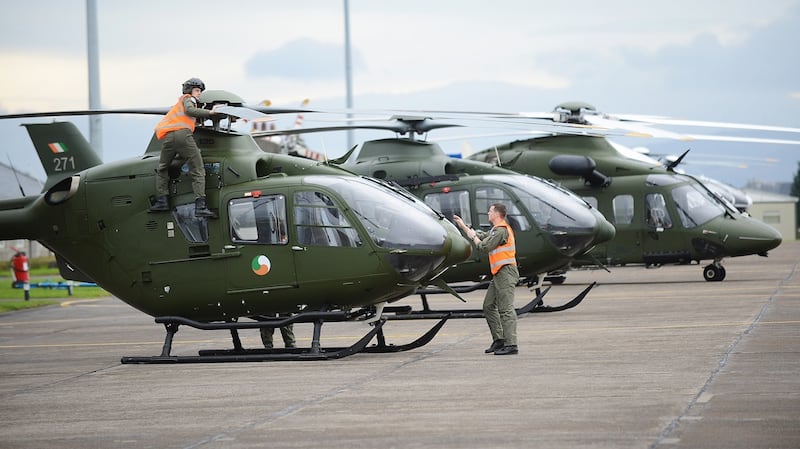The Defence Forces have stress-tested their capability for responding to a request for assistance from An Garda Síochána in the event of a major terrorist incident in Dublin.
In an exercise involving more than 500 Defence Forces personnel and carried out simultaneously at four Dublin locations, but also involving every Army barracks in the State, plus the Naval Service and Air Corps, the operation was a first – in terms of scale as well as the involvement of the Garda, mainly in an observer role.
The exercise included high-profile involvement by the Army Ranger Wing, the special forces anti-terrorist unit.
Security analysts have long urged that, in response to the wave of terrorist attacks in other European countries, which have resulted in mass civilian casualties, the Garda and Defence Forces should hold deeper and more frequent anti-terrorist joint exercises.
In July, Committee F, the new Cabinet sub-committee on security, directed that exercises be carried out on a multi-agency basis, starting with what are called table-top exercises and escalating to live exercises.

Wednesday’s event was a step in that direction and presages further events in which the fire and ambulance services are also likely to be involved. Last month, the Garda was invited to a Defence Forces desktop exercise on how to respond to a marauding terrorist attack, but did not attend.
Police, soldiers and anti-terrorist civilian experts from 15 other countries were present, however.
Observing Wednesday's exercise, Vice-Admiral Mark Mellett, chief of staff of the Defence Forces, said he and senior Defence Forces officers had a "very positive relationship" with An Garda Síochána.
“What we’re looking at here,” he said of Wednesday’s exercise, “is our own capability and testing that. The guards did it recently in terms of their own capability. We were observers at their exercise. They are observers at our exercise – in fact, they have a function in our exercise – and the next stage will be, I suppose, a larger-scale exercise involving not just the gardaí and the Defence Forces but other blue lights in due course. But we have to work up to that.”
Group of terrorists
The scenario for yesterday’s exercise was that a group of terrorists had attacked a city-centre Dart and rail station, notionally located at Pearse Street, Dublin. Eight people had been killed and 20 more wounded.
One terrorist was captured by the Garda Emergency Response Unit (ERU), but CCTV showed there were six attackers in all, indicating that five escaped and therefore remained a threat.
Based on information obtained from the arrested terrorist and from a series of follow-up raids, gardaí believed that a further series of major attacks directed at critical infrastructure was imminent and turned for assistance to the Defence Forces, invoking the “aid to the civil power” provision.
At 6am yesterday, a warning order (Warno) was issued by the Defence Forces, activating its standing contingency plan. Under this, every barracks has a platoon on standby for immediate deployment in case of emergency.

Yesterday, soldiers in contingency platoons were alerted in barracks at Finner in Donegal, Renmore in Galway, Sarsfield in Limerick, Collins in Cork, Stephens in Kilkenny, Custume in Athlone; Aiken in Dundalk and the Curragh in Kildare, as well as personnel at Cathal Brugha and McKee barracks in Dublin.
In the scenario, troops outside Dublin were ordered to move towards the capital, in effect encircling it, and await further orders.
Meanwhile, other troops were sent to secure the perimeter of Dublin Airport and also to secure the Air Corps base at Baldonnel. A Eurocopter EC135 helicopter was deployed over the city centre for aerial surveillance and oversight communication if needed, and a fixed-wing aircraft was placed on standby.
The Naval Service LÉ Ciara, on routine patrol in the Irish Sea, was diverted to secure the mouth of the Liffey and to deploy high-speed ribs into the river if needed.
In Shanganagh, south Co Dublin, three houses were searched by Garda ERU personnel and members of the Defence Forces. But the major ground operation took place at the semi-derelict and abandoned former Odlums flour mill on Alexandra Road in Dublin port. There, a four-storey-high office block was reimagined as an apartment block containing a terrorist bomb-making factory and several terrorists.










